Every day Herbalism
The Plantain
With summer in full swing, and with my entire family walking around the yard barefoot, I thought it would be a good time to highlight my favorite perennial "weed" that I use to cure bee stings.
Summary:
The mighty plantain has long been used as an herbal remedy for a variety of afflictions. Since Pre-Christian times, the plantain has been celebrated as a cure for many ailments, including cough, bronchitis, sore throats and irritable digestive tracks. It also has a reputation for clearing up insect bites and stings, and was also considered a remedy for snakebites. The plantain has a long history as a medicinal in Europe, and became a favorite in the new world once European settlers brought it over. There are two primary types of plantain. The ribwort plantain, plantago lanceolata and the greater plantain plantago major.
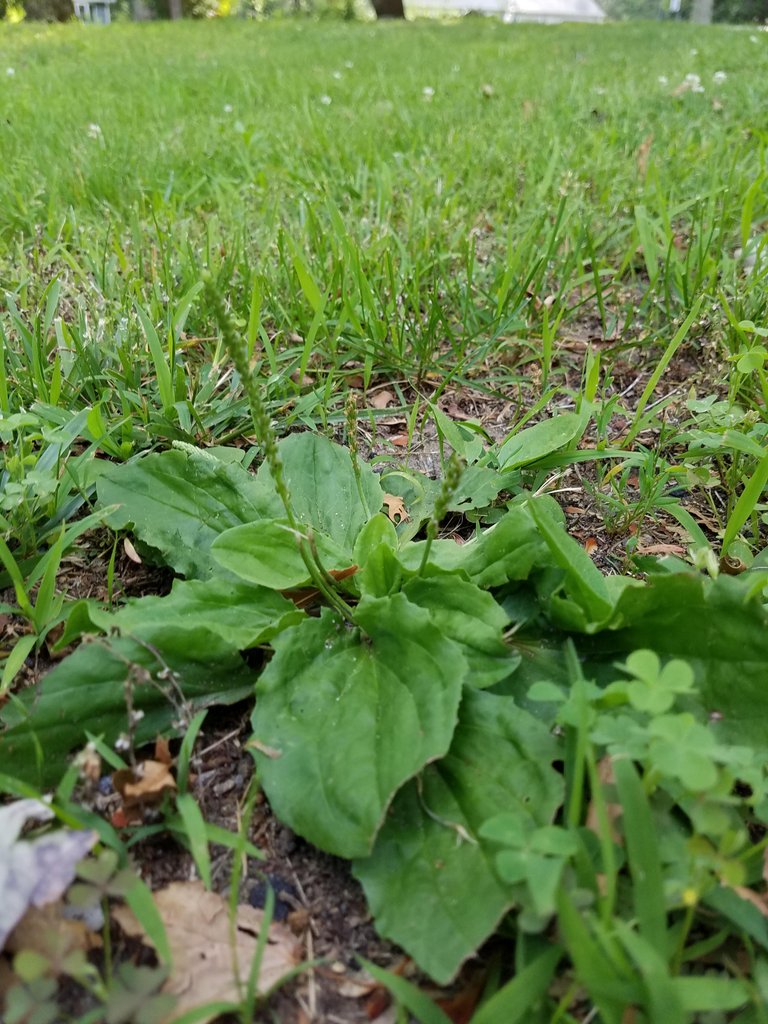
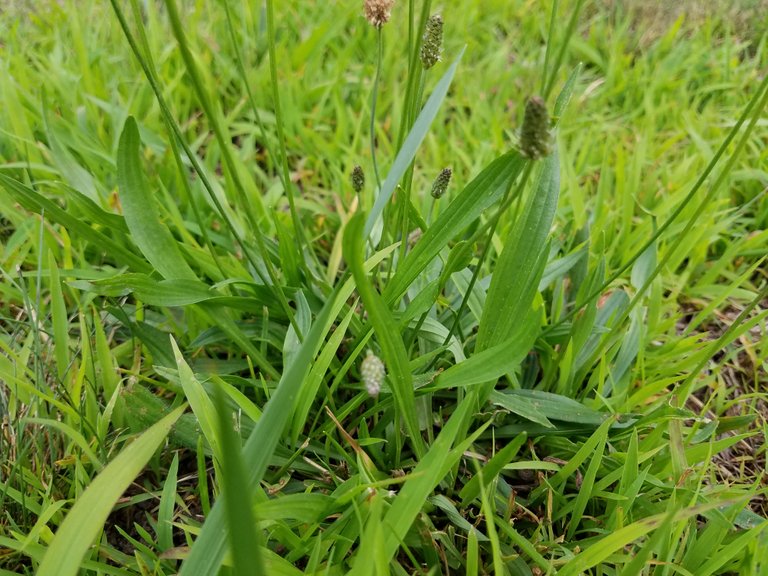
History
In Europe, the plantain has long been a favorite of herbalists. It was one of the nine sacred herbs of the Anglo-Saxons. When European settlers came to the new world, they brought the plantain with them. It was known as “White man’s footprint” among Native Americans, because it followed the settlers everywhere they went. It quickly became a favorite medicinal herb among Native American, often being called “Indian Band-Aid”. It quickly spread across North America, becoming the familiar “weed” that it is now known as.
Habitat
The plantain is a mainstay weed of most American lawns. It thrives in almost every temperate environment. It seems to prefer footpaths and other well-trodden areas where the ground has been compacted. The Anglo-Saxon name for the plantain was ”waybrode” or ”waybread” because of its affinity to grow by the way paths.
Identification
The plantain is a perennial weed. The greater plantain, or broadleaf plantain has wider, oval or egg shaped leaves. Ribwort plantain has longer pointed leaves. The plantain leaves are ribbed and grow as a rosette from the base of the plant. It sends up an erect stalk that grows to about 5 inches.
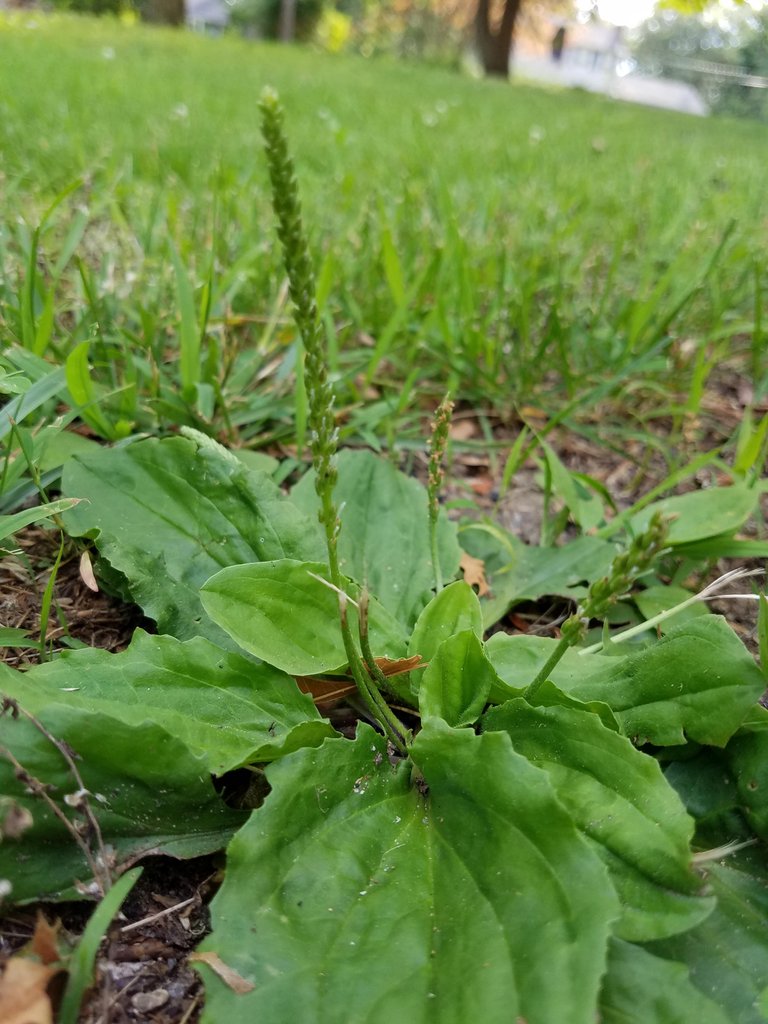
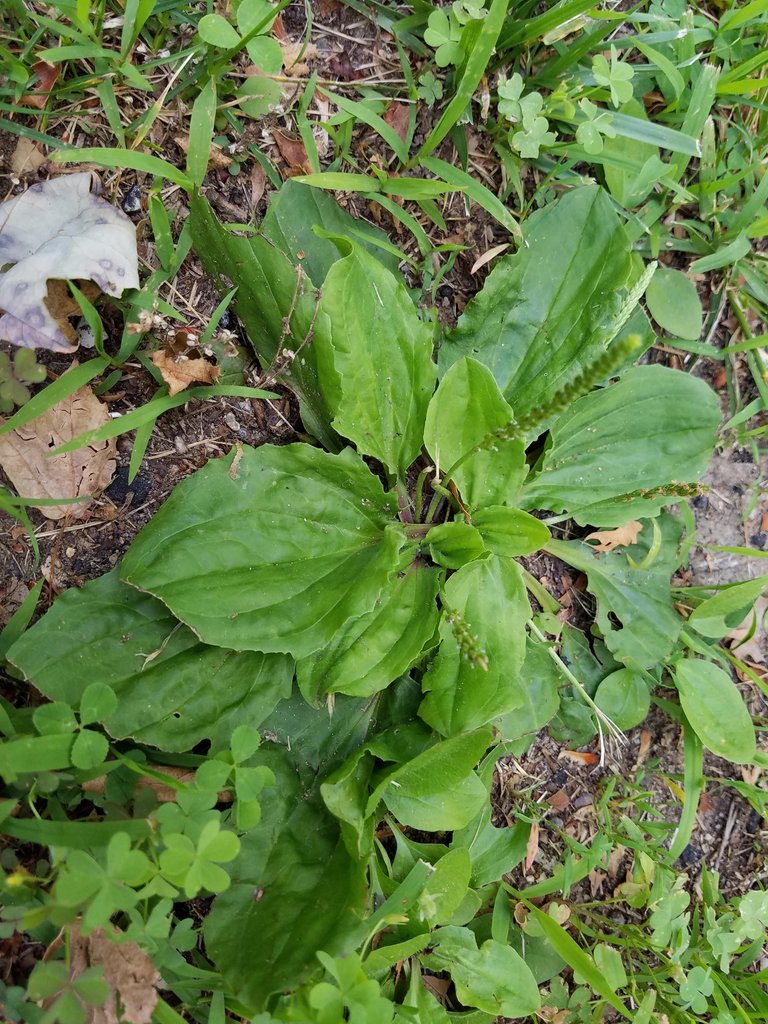
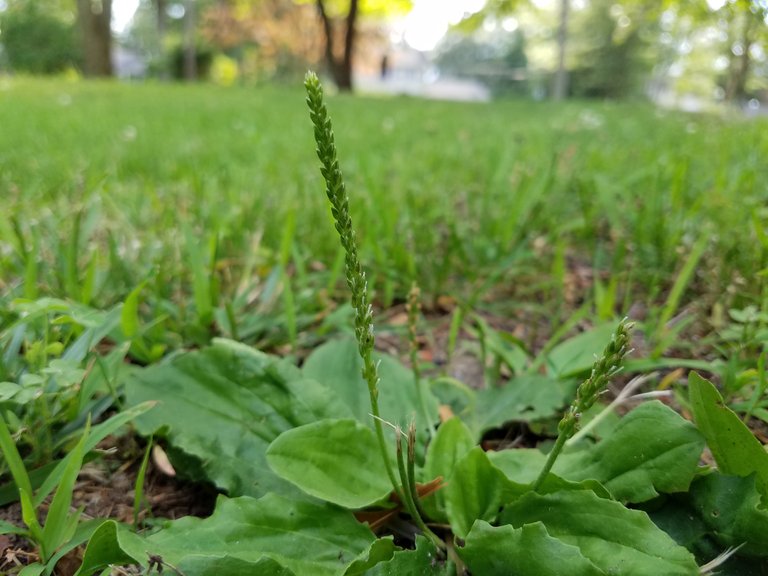
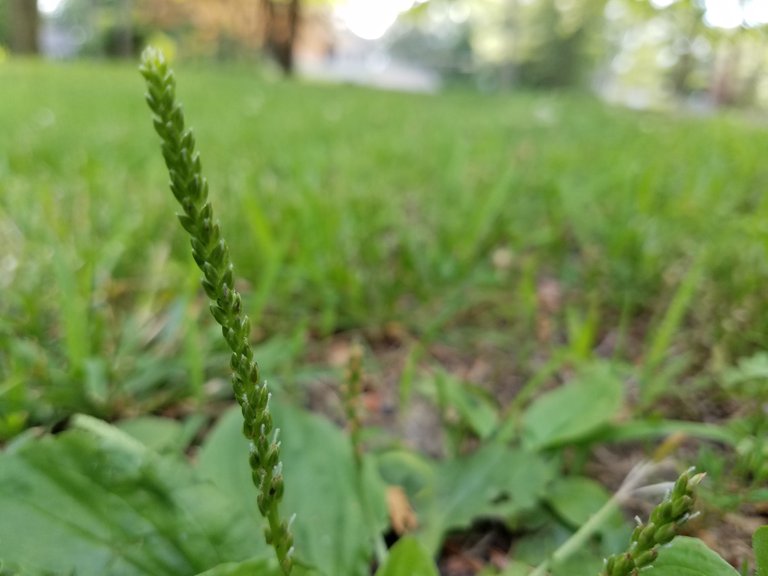
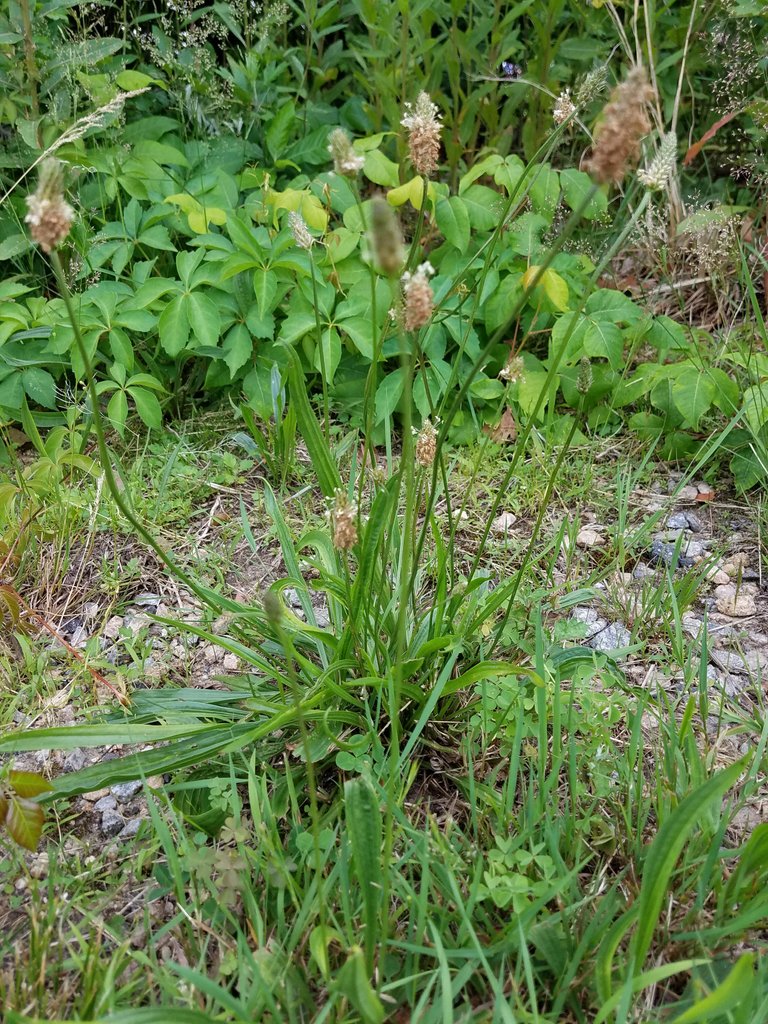
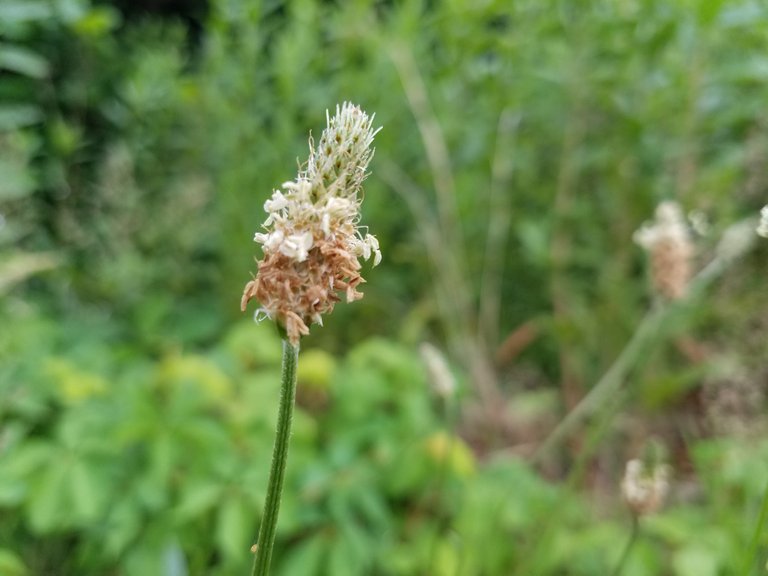
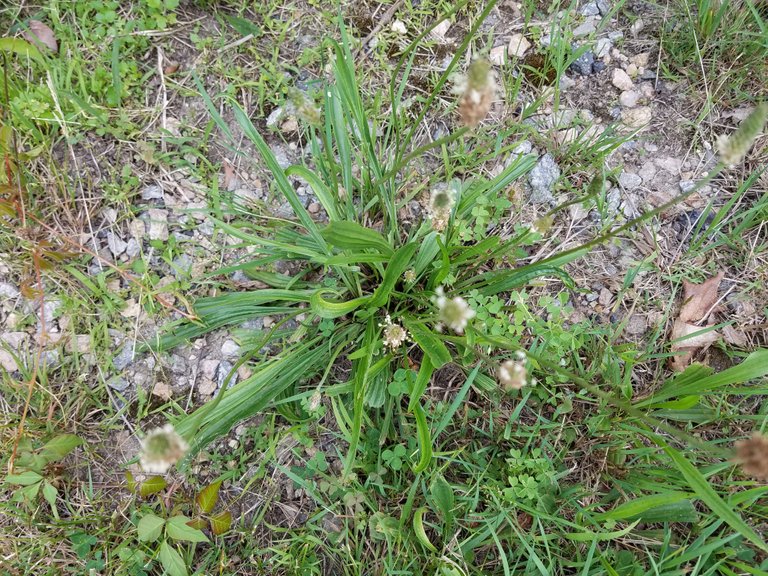
Harvesting
Leaves:
Fresh plantain leaves can be picked as needed and crushed or chewed for medicinal uses. Leaves can be harvested and frozen for use during the winter. Leaves can also be harvested and dried. I prefer to cut the leaves near the base, and then turn them daily on a mesh screen until they have fully dried.
Seeds:
When the seeds are ripe, pull the entire stalk off the plant. Dry the seed head fully, and then strip the dried seeds off the stalk. They are best stored in brown paper bags or in an airtight jar.
Uses
Tea:
The dried leaves can be used as a tea by taking 1 teaspoon of dried leaves and steeping in hot water for 5-10 minutes. Fresh leaves can also be used, but the quantity must be increased.
Plantain tea is a great medicine for coughs, mild bronchitis, sore throat, irritable bowels and stomach ulcers.
Tincture:
Pick fresh plantain leaves and blend them with enough vodka to just cover them. Blend until the mixture is a green mush, and then pour into a jar. Keep the jar in a cool dark place for about three days, then strain the solids from the liquid and keep the liquid in an airtight bottle.
Plantain tincture is used for many of the same ailments as plantain tea. Dosage is ½ to 1 teaspoon three times a day.
Raw leaves:
The raw leaves can be cut or plucked when young and added to salads. If the leaves are too stringy, then they can be blanched in boiling water for a minute or two so they soften up.
The raw leaves of the plantain, especially ribwort plantain, are by far the best trail-side antidote to insect bites and stings. When fresh plantain leaves are chewed up and applied to an insect sting, the relief is almost instant. When crushed and mixed with equal parts oatmeal and water, the resulting “plaster” has an intense healing effect on almost all skin ailments. Rashes, cuts, allergic reactions, insect bites, burns and acne are just a few of the things that freshly ground up plantain leaves is effective at remedying.
Seeds:
The seeds and husks can be ground in a coffee grinder, or used whole. The seeds are great added to salads, yogurt with berries, or sprinkled on any food one to three times daily.
The seeds are great for curing ailments like constipation or irritable bowels.
Succus:
Juice fresh plantains leaves and mix the juice with an equal amount of honey. It works best if the honey has been slightly warmed to make it run better. Keep this in mixture in a clean, sterile bottle and store in a cool dark place.
The plantain succus can be used for sore throats, coughs, and stomach ulcers. It can also be applied externally as a wound dressing for cuts, scrapes and other sores.
General Disclaimer
None of the advice here should be considered medical advice. I am not a doctor, nor do I advocate herbal supplements as the only source of healing. Some things require medical attention. These are my own experiences with the plant and you should take all precautions to correctly identify every plant you plan on putting in or on your body. Mistakes in nature can be dangerous or fatal. Please use caution when eating and using wild plants.
All the images are my original, taken with Samsung Galaxy 7 while hiking, around the yard etc.
I use various sources for learning about wild edibles. Here are the three main sources I used to compile this article. I am not affiliated with any of these sources in any way.
Book: Backyard Medicine
Webiste: Eat The Weeds Website
Website: Edible Wild Food
I have heard plantain to be called "mother nature's suture" because of its healing properties for cuts. Just the other day my wife instructed my daughter to chew up a leaf and use it as a dressing for a cut. Your post is full of useful information. Thank you! Upvoted, following and resteemed!
Thank you for the support.
Its fun to see people's reaction when you use a common plant they step over (or try to chemically remove from their lawn) to cure some minor ailment. I still remember the look on my in-laws faces when I used a plantain to help my son's bee sting. They looked at me like I had two heads, until he stopped crying, said it felt better and went back to playing.
I wish I knew about bee stings. My 3 year old had one 2 days ago. It kills me to think people poison dandelions, too. Such a pretty and useful plant.
I can personally attest to the usefulness in treating insect bites and stings with plantain, though the broadleaf variety gives better results in my experience.
I really only have access in my yard to broadleaf. Its much more water-filled than the ribwort, and tends to make a better poultice.
I have a pretty abundant supply of both. I think the major difference is the lack of moisture in the latter.
I enjoy eating plantain leaves! The common name I've always used for the P. lanceolata is the narrow-leaf plantain, so it's nice to hear another common name. They both have several! I like the mushroom flavor of the raw narrowleaf plantain. It gets lost in the cooking, I think, but the cooked greens flavor is nice, too. It's tiny in the winter and early spring, but I consider it a staple once spring has really started in my area. In the shade, the leaves can get pretty big, too. Enjoy your plantain -- but I hope you don't need it for medical needs very often!
Thanks for another name to call it! I realize sometimes I call certain plants by a name, and sometimes nobody knows what I am talking about.
I like them both as a trail-side nibble, although my wife and kids find them a bit too stringy without cooking down a bit.
I have noticed at the edge of wooded areas that the leaves get absolutely massive. At least as big as my hand. I've always wanted to try and use those as a wrapper, like grape leaves, but just haven't done it yet.
We get a decent number of bee- stings to try it out on, but it seems to do OK for mosquito bites as well.
When a plant has so many common names, that suggests to me that it has a lot of uses. People cared enough about that plant to give it a name -- in a lot of places, each with their own name.
That's an interesting idea to use them as wrappers! With leaves the size of your hand, that's sounds possible, indeed!
I like plantain. I have a big one in my garden with large leaves. It is also very decorative.
Those two plantains sure have different flowerstalks! The seeds of the broadleaf plantain are so much bigger and it's satisfying to strip them off that stalk, lol.
These plantain plants are closely related to commercially grown Plantago species. Those farmed Plantago are grown for their seeds to produce Psyllium -- the working ingredient in Metamucil! So those seeds are a "dietary fiber", for sure! It's great having the wild relatives to use for food!
People always wonder where that stuff comes from. Almost every minor ailment we suffer can be helped by nature and natural remedies.
I wonder which one they domesticated for the psyllium?
Most interesting post @cavemanrob. We have a lot of plantain here.
I recently went on an introduction to herbal medicine course at the Centre for Alternative Technology. The teacher was very keen on plantain - particularly for bites and stings.
it's by far the easiest "entry level" herb for everyday use.
I specifically used it for my first "hebalism" post for those reasons.
Im glad more people are into it, it was really a fun hobby for me growing up, and it's important for me as a father to teach my kids this stuff.
It's also a lot of fun, and makes you feel really good just knowing this information.
Great article on plantain! I also found that a tea of the whole plantain plant including the roots will deal with any toothache fast and there aren't too many plants around that can do that. Sunny greetings from Spain!
Do the roots need to be roasted first? what kind of tea do they make? seems like it would be a reddish tea?
Ill have to try that next. Thank you.
Hi, @cavemanrob! No need to roast them. The plantain I see around here has only very fine roots. I just make an infusion of the whole plant including the roots. Tastes quite mild and rather pleasant.
I will have to try that. Thanks for the info.